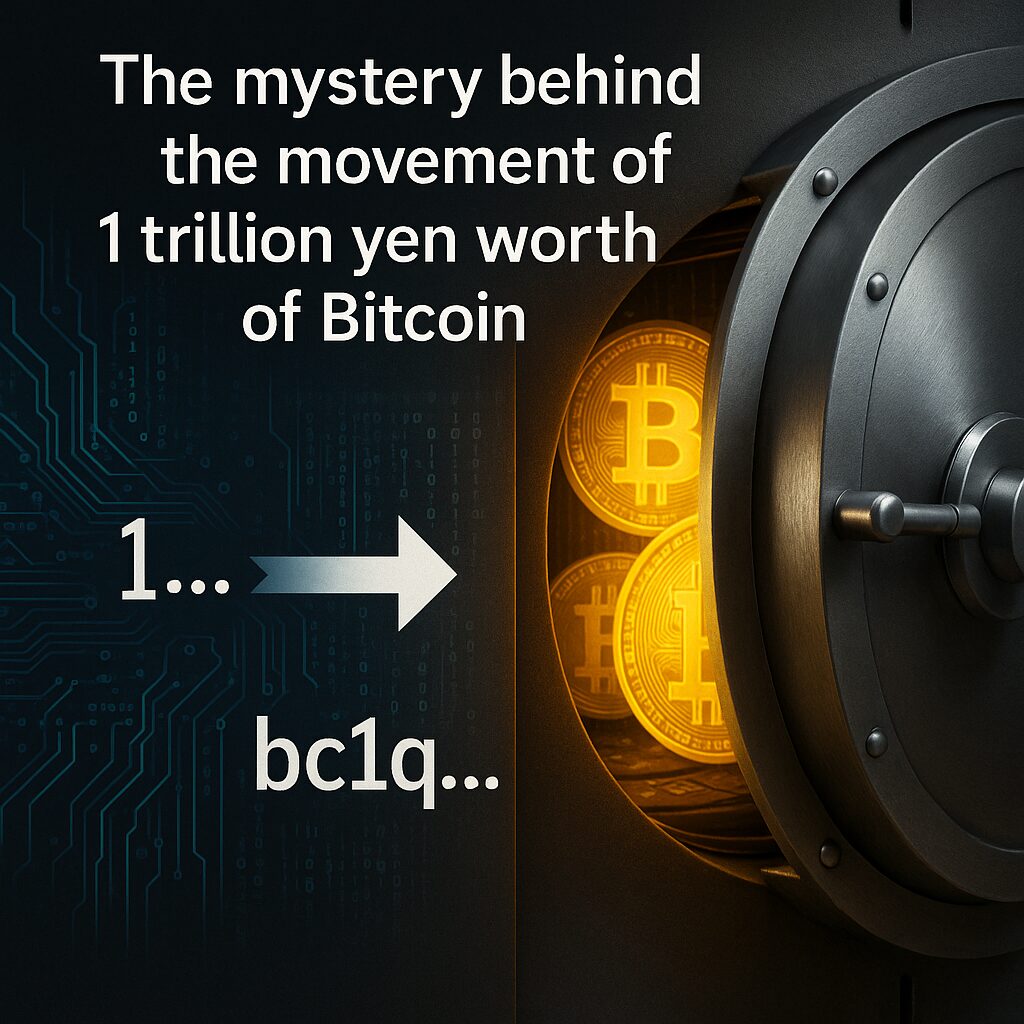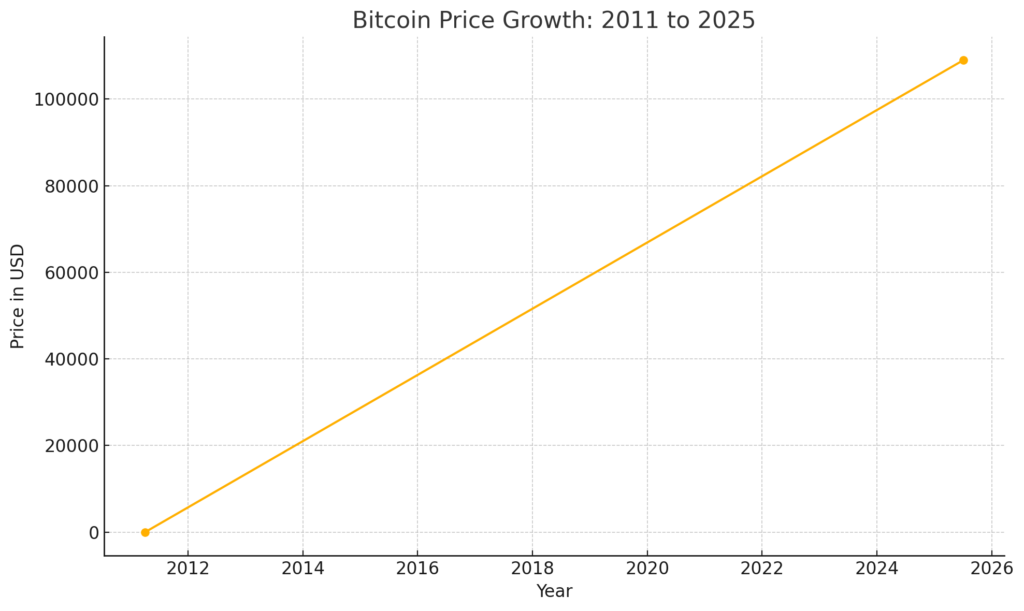
Main Points:
- Over the weekend of July 4 – 5, 2025, eight Bitcoin wallets that hadn’t moved in 14+ years suddenly transferred a total of 80,000 BTC ($8.7 billion) to new addresses.
- On-chain analysis by Arkham Intelligence points to an address-format upgrade—from legacy “1-” to Bech32 “bc1q-” addresses—rather than an intent to sell.
- The first two wallets each held 10,000 BTC since April 3, 2011, when each BTC was worth $0.78; today those coins are worth about $1.1 billion each (139,828× increase).
- No further movement has been observed from the new addresses, easing fears of a sudden market dump.
- Speculation abounds over the owner’s identity—names like Roger Ver, CIA, and even Satoshi Nakamoto himself have surfaced—but none have been confirmed.
Background: A Satoshi-Era Awakening
On July 4, 2025 (American Independence Day), blockchain explorers noticed something extraordinary: coins that had lain dormant since 2011 began to stir. Arkham Intelligence observed two wallets—each containing 10,000 BTC—first moving their holdings early Friday morning UTC, followed by six more wallets on Saturday. These addresses originally received their coins in April and May 2011, when Bitcoin was trading at just $0.78 per coin.
Rather than a sale, Arkham’s investigators concluded this was likely a planned migration to newer address formats, moving funds from vulnerable legacy P2PKH (“1-”) addresses to SegWit-enabled Bech32 (“bc1q-”) addresses that offer enhanced security and lower fees. As of July 8, there have been no onward transactions from these receiving addresses, suggesting the coins remain in cold storage.
Why Address Upgrades Matter
Enhanced Security
Bech32 addresses reduce the risk of certain transaction malleability attacks and checksum errors that can plague older formats. By upgrading, holders protect against vulnerabilities discovered since 2011, including some theoretical flaws in ECDSA nonce generation.
Lower Fees and Future-Proofing
SegWit adoption generally leads to smaller transaction sizes and therefore reduced network fees. For whales managing tens of thousands of BTC, even tiny savings per byte can translate into significant dollar amounts. Moreover, Bech32 is the foundation for upcoming upgrades like Taproot v2, ensuring compatibility with future enhancements.
The Enigma of Ownership
Speculative identities range from high-profile figures to government agencies:
- Roger Ver (“Bitcoin Jesus”): An early investor known to have amassed large early Bitcoin holdings; recently indicted for alleged tax fraud in Spain.
- CIA or Other Entities: The movement’s precision and timing (Independence Day) have fueled theories of a state actor testing blockchain control.
- Satoshi Nakamoto: A fringe hypothesis points to Bitcoin’s creator finally accessing lost keys from the 2009–2011 era.
To date, no public statement or landmark transaction (e.g., a small outbound “test” transfer) has confirmed any identity. The community remains on alert for OP_RETURN messages or vanity-address Easter eggs, but none have emerged.
Market Impact and Community Reaction
Despite the sheer scale—80,000 BTC is the largest single dormant-wallet movement ever, dwarfing previous record transfers—the market’s reaction has been muted. Bitcoin’s price held steady around $109,000 in the hours following the transfers, indicating that traders judged this an internal security measure rather than an impending dump.
On social media and forums, the event sparked both awe and speculation:
- On-chain sleuths praised the stealthy migration.
- Skeptics warned that the holder could still liquidate at any time.
- Developers applauded the demonstration of long-term security hygiene.
Figure 1: Bitcoin Price Growth, 2011–2025
Figure 1 illustrates Bitcoin’s astronomical rise in value—from $0.78 on April 3, 2011, to approximately $109,000 on July 4, 2025—underscoring why early coins become both treasured and vulnerable over time.

(Chart displayed above)
Broader Context: Dormant Funds and Recovery Markets
This event highlights a growing trend: as forgotten wallets “wake up,” a recovery market for dormant assets may emerge. Services specializing in key-recovery or legal claim facilitation could see increased demand, while custodial providers must reinforce cold-storage protocols. Furthermore, analysts will watch for any ripple effects on legacy wallet migrations and potential exploit attempts.
Conclusion: Security Over Sale
The July 4–5, 2025 movement of 80,000 BTC demonstrates the importance of proactive security in the Bitcoin ecosystem. Far from a surprise sale, this appears to be a careful upgrade to modern address formats, preserving the holder’s fortune for the long term. While questions about identity and moti ve persist, the broader takeaway is clear: in the fast-evolving world of crypto, even the oldest assets require periodic maintenance to remain secure and efficient.

